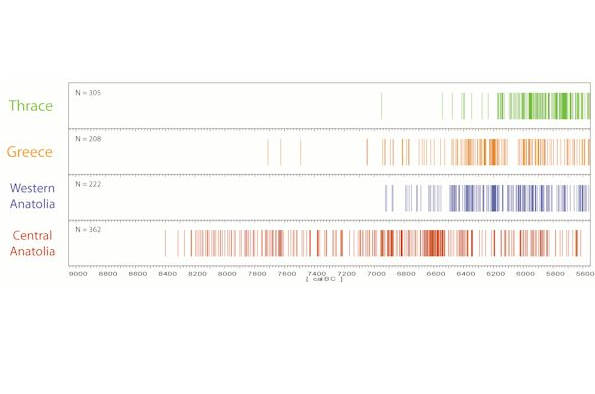
Two pathways to Neolithic life in Anatolia? Comparing the Neolithic of Central and Western Anatolia
- Professor Doug Baird
- Admission: Admission is free. Please contact Professor Doug Baird to register: dbaird@liverpool.ac.uk
Add this event to my calendar
Click on "Create a calendar file" and your browser will download a .ics file for this event.
Microsoft Outlook: Download the file, double-click it to open it in Outlook, then click on "Save & Close" to save it to your calendar. If that doesn't work go into Outlook, click on the File tab, then on Open & Export, then Open Calendar. Select your .ics file then click on "Save & Close".
Google Calendar: download the file, then go into your calendar. On the left where it says "Other calendars" click on the arrow icon and then click on Import calendar. Click on Browse and select the .ics file, then click on Import.
Apple Calendar: The file may open automatically with an option to save it to your calendar. If not, download the file, then you can either drag it to Calendar or import the file by going to File >Import > Import and choosing the .ics file.
Two pathways to Neolithic life in Anatolia? Comparing the Neolithic of Central and Western Anatolia
The term ‘Neolithic’ has been used since V. Gordon Childe (1936) as a shorthand for the shift to food production. In Western Eurasia, the Neolithic transition involved two distinct phenomena or processes, which appear to have been segregated spatially: a) long-term adaptation through plant and animal domestication in the Near East; and, b) westward spread of early domesticates across Europe. Anatolia, referring in this context to the Anatolian Peninsula or Asia Minor, sits astride these two horizons and appears to have encapsulated the differences existing between the Near Eastern and the European Neolithic.
While ongoing excavations in the Konya Plain and Cappadocia have traced back the origins of sedentary farming in Central Anatolia to the second half of the 9th millennium calBC, not a single farming site in Western Anatolia has produced consistent evidence for a Neolithic occupation prior to c. 6,700 calBC, despite intensive research strategies over the last 20 years targeting early human occupation. This seminar will explore the hypothesis that the apparent lag in Neolithic occupation between Central and Western Anatolia reflected an actual frontier, where farming expansion was halted.
The process by which societies arrived at the Neolithic appears to have been quite different in Central and Western Anatolia. While sedentism preceded agriculture in Central Anatolia and farming arrived piecemeal over a period of several hundred years, all the components that make up a Neolithic pattern of existence seem to have been present from the start in Western Anatolia, highlighting perhaps the ‘packaged’ way in which the Neolithic spread beyond the Central Anatolian Plateau.
Questions to be addressed in the seminar include: 1. When did farming spread into Anatolia (and beyond)? 2. How did farming spread into Anatolia? Piecemeal? As an integrated ‘package’? Or both? and 3. Who spread farming?
